Naples is not just about the sea, breathtaking views and delicious food. As is well known, the city is also a burrow of history from every era and timeless charm.
Shrouded in mystery and full of secrets to discover, Naples is known worldwide for its esoteric appeal.
Stories and legends that challenge the popular imagination, fascinating places that tease the distrust of skeptics, if you love mystery in Naples you will meet your match.
Today we want to offer you a little tour of esoteric Naples by introducing you to 7 places and tales (have you ever heard about the "Munaciello," a two-faced legend with an all-Neapolitan flavor?) that will leave you breathless.
We will start our journey with the legend of Munaciello. We will continue with the ghost of the monastery of Santa Chiare and an in-depth look at the famous Neapolitan alchemist Raimondo di Sangro. After a visit to the souls of Purgatory and one in the underground of Naples, through the Naples Underground, we will get to know the Devil's Palace and finally visit Dracula's tomb.
You can find a hint of mystery all over Naples, in its churches, castles, catacombs and alleys. Explore the city and its mysteries more easily and without queuing with the Naples Pass.
7. The many faces of the Munaciello: the Pozzaro of the undergrounds of Naples
O' Munaciello in Naples is a legendary and mystical figure in the city's tradition, whose profile would correspond precisely to a small monk with a habit, sandals and silver buckles.
Of course, there is more besides the ecclesiastical aspect.
Around the origins of the
Munaciello, as many as three theories hover, one different from the other. However, our focus is only on one of them, namely that of the
"pozzaro." The Munaciello would in fact have been the ancient manager of the
city's water wells, hence the name, and thanks to his being small in stature he was able to penetrate into houses by crossing the canals whose function was to lower the bucket.
However, when as was often the case the pozzari were not paid by their patrons, the latter rebelled in their own way. In fact, their revenge consisted in entering the homes of powerful lords by going and stealing and making their own the many precious objects they found. Such rich relics that the pozzari cunningly went to take, then were given as gifts to their mistresses. And that is why the Munaciello is said to "sometimes give, sometimes steal."
6. The Monastery of Santa Chiara and the ghost of the queen
Let's now move to the heart of the old town, to Piazza del Gesù. The square itself would be worth being part of a tour of esoteric Naples for the mysterious esoteric symbols engraved on the ashlar of the church of Gesù Nuovo, but right next to the square, there is also the monastery of Santa Chiara.
Famous for its art treasures and the uniqueness of the majolica cloister, the fourteenth-century monastery is also known for the disturbing presence of a ghost that wanders inside it. A female figure with her head bowed has been wandering here for centuries without finding peace.
According to many, it would be the restless spirit of Queen Giovanna d'Angiò, murdered by the assassins of her usurper cousin Carlo di Durazzo in 1382. Since Queen Giovanna had previously been excommunicated, she was buried in a common grave near the monastery and without a blessing, which is why she would still wander around, suffering and restless.
According to belief, the Munaciello would continue to wander underground passing through the city's ancient buildings, causing misfortune and misfortune. One of the buildings allegedly haunted by his spirit is Villa Gallo, a 15th-century historic building located in the Colli Aminei area.
5. Prince Raimondo di Sangro and the Chapel of San Severo
The tour to discover esoteric Naples cannot fail to stop at the San Severo Chapel.
The Chapel of San Severo, among the most important museums in Naples, is and will forever be linked to the figure of Prince Raimondo di Sangro, a mysterious character of 18th-century Naples.
About him, who was among others an alchemist, man of letters, inventor, writer, anatomist and whatnot, there are so many rumors and legends, fantasy stories of irresistible fascination.
It was said of him that he knew how to reduce
marbles and
metals to dust, and thanks to this skill the alchemical process of
"petrifying" the veil of Christ in the
Veiled Christ (Cristo Velato) takes shape. He also allegedly blinded the author of the masterpiece, namely
Giuseppe Sanmartino, so that he would never replicate for others a work of such magnificence.
Around his mystical palace traveled through the air intermittent flames and infernal lights, while at night it was heard like the beating of an anvil taken vehemently by hammering. Surrounding the figure of Ramon is indeed a black legend with macabre and dark implications. In fact, the Prince allegedly killed seven cardinals in order to build seven chairs with their bones, while their skin served to cover the seats.
Finally, how can we fail to mention what would lie behind the fantastic and evocative work of the "anatomical machines," where we see our Prince as the protagonist once again. According to legend, the two bodies used for the work would have been two of his servants. They would be a man and a pregnant woman, killed to experiment with new methods for embalming. On the corpses careful anatomical studies would then be made by Ramon and a doctor, with special attention to the circulatory system.
“Anime pezzentelle” the poor souls of the Church of Purgatory in Arco
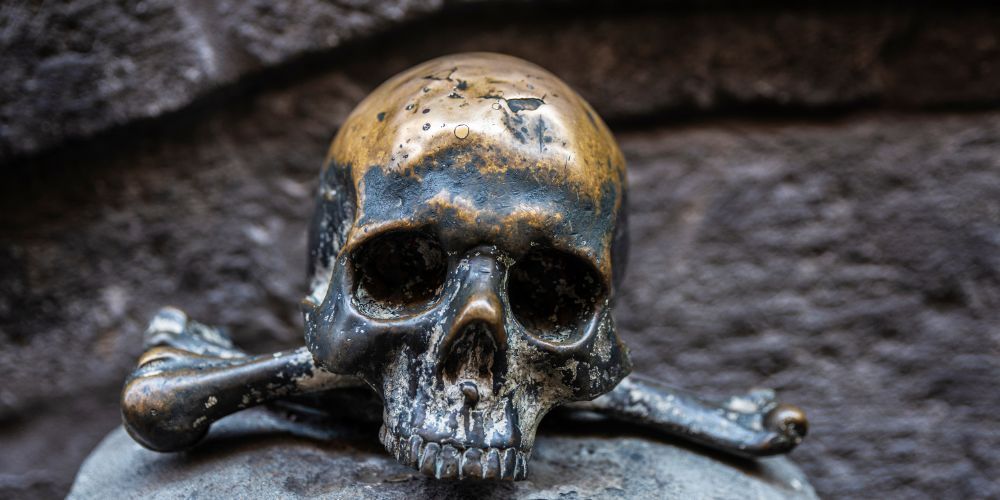
After leaving the San Severo Chapel, let's continue uphill for a few meters along Via Nilo to reach Via Tribunali. Here are two other essential stops on the esoteric tour of Naples.
The first is the church of Santa Maria del Purgatorio ad Arco, a baroque jewel with works by Luca Giordano and Andrea Vaccaro. A trap door in the floor leads to a hypogeum, an underground and austere church, lit by dim light bulbs and with an anonymous tomb in the center, surrounded by black chains. This place is the epicenter of the Neapolitan cult of the "anime pezzentelle".
In Naples there is a positive bond with the occult and the afterlife that has always been indissoluble and so it is not surprising that even today, between superstition and religion, the living and the dead... collaborate. But let's take a step back.
Between famines and plagues, in past centuries the phenomenon of mass graves or unmarked tombs was not uncommon. According to tradition, the souls of people buried without a prayer or a blessing were stuck in purgatory unable to reach Heaven. These are called anime pezzentelle, poor souls without anybody praying for them. Since in Naples there is also a deep-rooted belief that in misfortune people must help each other, an exchange was born spontaneously between the living, who “adopt” an anonymous skull, cleaning it, praying to it, bringing it flowers, and the deceased, who in exchange fulfills a specific request. This belief was and is so strong that it sometimes surpasses faith in saints, so much so that the church has tried to prohibit it. In vain.
This cult is strongly felt throughout Naples, but in the church of Santa Maria del Purgatorio ad Arco there is a real star among the poor souls: Lucia, who committed suicide for love. The devotees decorate her skull with a bridal veil and bring her flowers, in exchange Lucia helps girls find love.
3. Naples Underground to be experienced and discovered
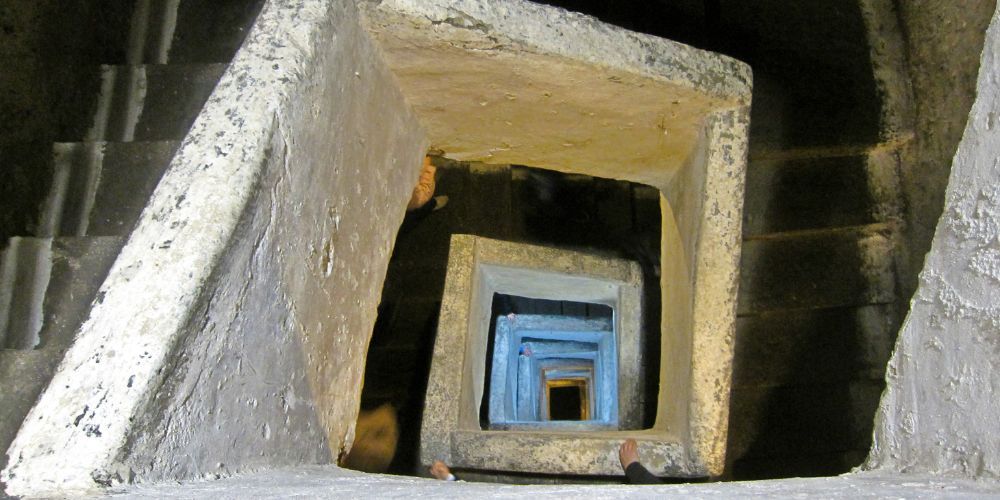
The last stop on the esoteric tour of Naples is, as anticipated, Napoli Sotterranea, a unique place in the world that will allow you to visit "the other Naples", the one that literally lived (and still lives) on the underground.
The history of the underground passages of Napoli Sotterranea is very ancient. The first to dig underground to extract tuff for construction were the Greeks, who thus generated the first underground environments. Later the Romans, taking advantage of the work already done, continued to dig the tunnels, mainly for hydraulic purposes.
Throughout the history of Naples, the underground passages and tunnels were exploited for various purposes, such as air-raid shelters during the bombings of World War II for instance.
Napoli Sotterranea is also linked to many legends and mysteries, including the one already mentioned of the Monaciello, who allegedly used these tunnels for his mischievous "pozzaro" work.
There is no doubt, then, that this underground place that capillary winds under the entire city, reaching almost everywhere, has also served anyone in the history of Naples who needed to hide something or themselves.
Napoli Sotterranea is therefore a definitely mandatory destination for anyone who wants to delve into the city's most obscure history, while also discovering numerous traces of esotericism and mystery surrounding it.
There is only one official authorized route for the tour and it starts from Piazza San Gaetano 68, a location located on Via dei Tribunali. The excursion through the fascinating Greco-Roman history of Naples will last about an hour and a half.
2. Palazzo Penne, the devil's palace
For the next stop on the esoteric tour of Naples, we return to the Monastery of Santa Chiara. We walk along the cloister along Via Santa Chiara to reach Via Donnalbina, where Palazzo Penne is located.
This fifteenth-century palace, now squeezed between more recent buildings, is not particularly large or elegant, but it is linked to none other than Beelzebub.
Its builder, Antonio Penne, was secretary to King Ladislaus, but his important position did not help him conquer the girl of his dreams. In fact, she wanted a palace as a wedding gift, that Antonio was supposed to build in just one night. In order to grant the capricious girl's wish, Penne made a pact with the devil, who helped him build the palace but in exchange demanded his soul.
Antonio cleverly inserted a clause, so that the Devil, before taking his soul, would have to count the grains of wheat that Antonio would scatter in the courtyard of the palace. To trick Beelzebub, the man sprinkled the grain with pitch, making it impossible to count. The devil was then swallowed up by a chasm that opened in the courtyard of Palazzo Penne, remaining imprisoned there.
According to a version of the same legend, Beelzebub managed to free himself and on the day of Antonio's wedding he went to take what had been agreed upon.
1. Dracula's grave
The last stop on the esoteric tour of Naples is the beautiful convent of Santa Maria la Nova, less than five minutes from Palazzo Penne.
In the minor cloister of the convent is the funerary monument of the tutor of Alfonso of Aragon, Count Matteo Ferrillo, who died in 1499. But what could be the connection between a Neapolitan count and a Transylvanian count?
Well, it seems that Matteo Ferrillo's daughter-in-law was the daughter of Vlad Tepes, better known as Dracula, sent to Italy by her father to keep her safe from the Turkish invasions.
According to this version of the story, when Count Dracula was taken prisoner by the Turks, his daughter Maria ransomed him and brought him to Naples. Here he died and was buried in the family grave, that of Ferrillo.
In support of this thesis there is the figure of the dragon, the banner of Count Vlad, which adorns the tomb, together with two opposing sphinxes never seen before on a European tomb. Italian scholars and also the University of Tallinn have intervened to investigate these events halfway between history and legend, and the probability that Dracula's grave is actually in Naples.
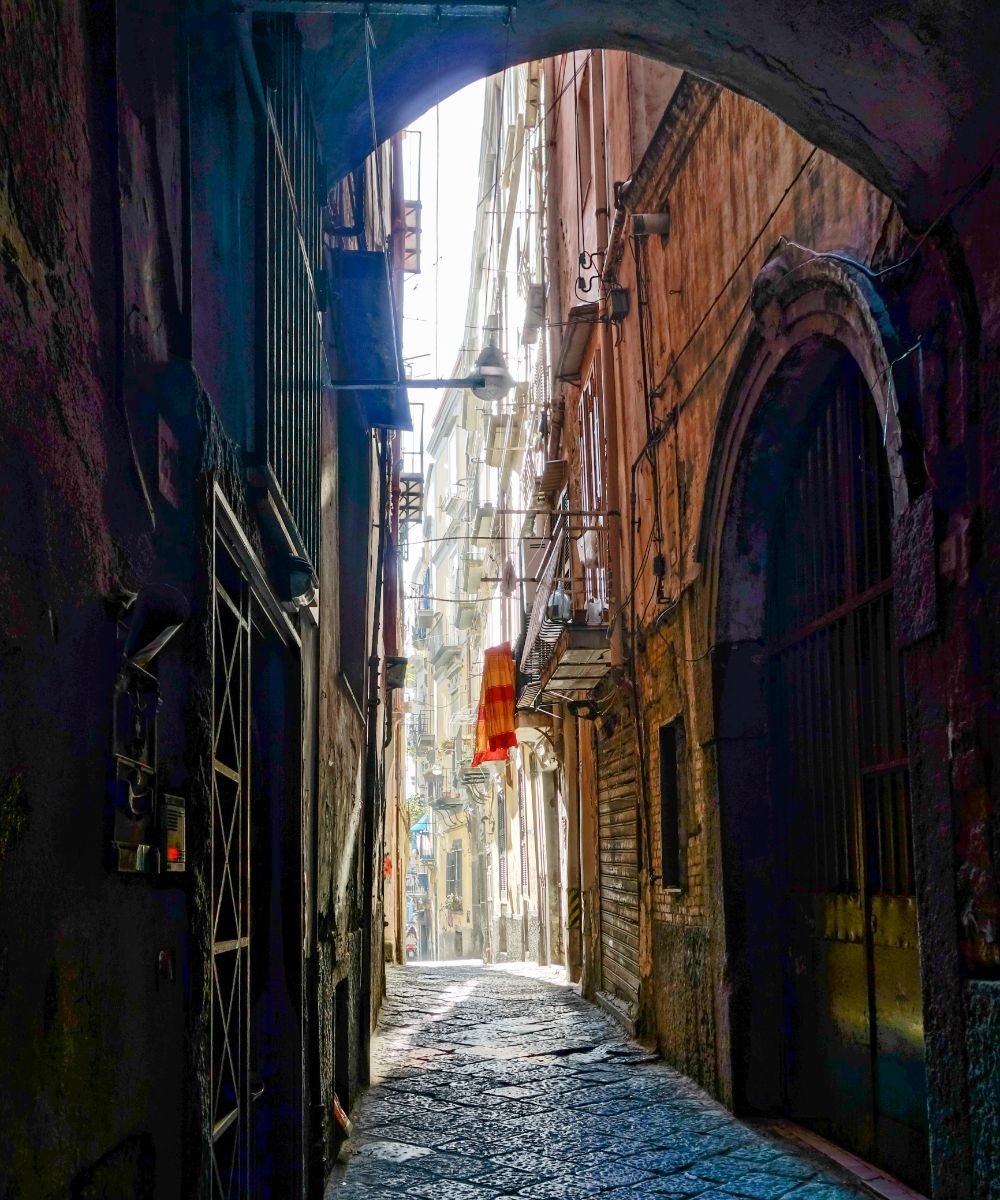
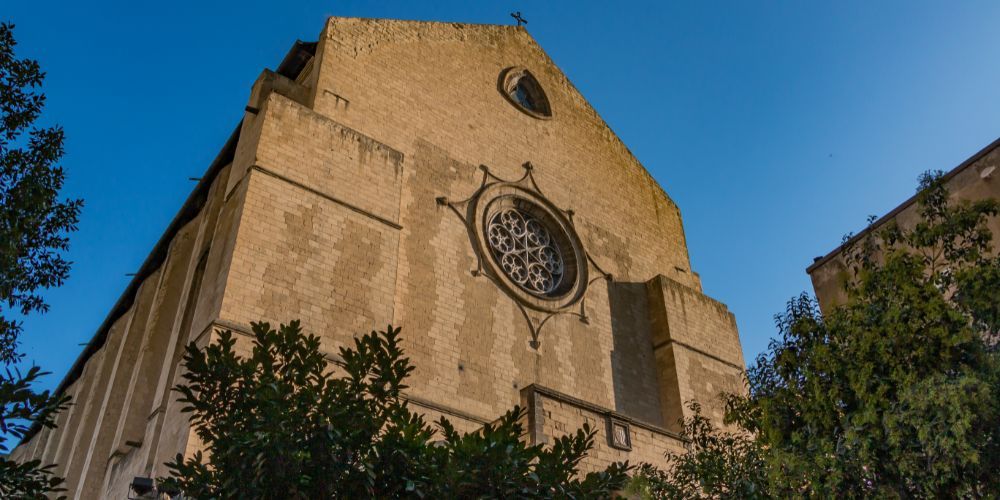
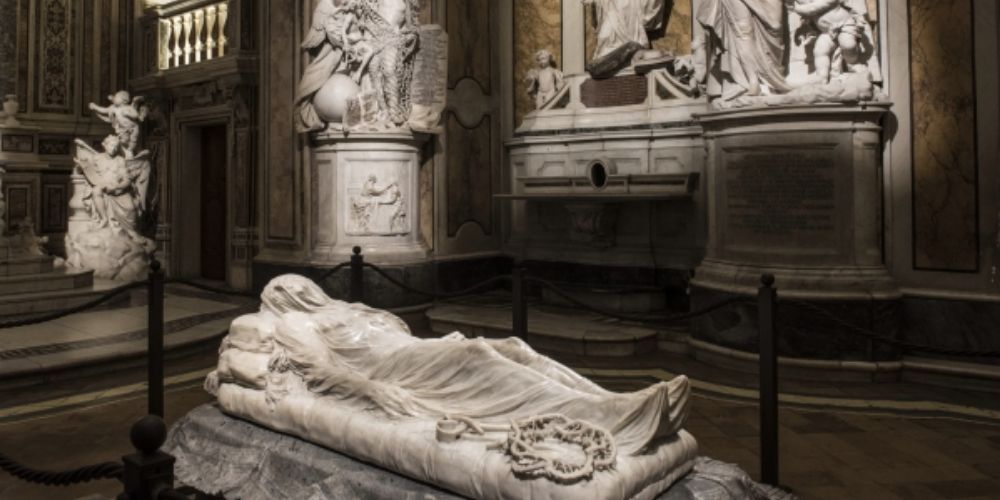










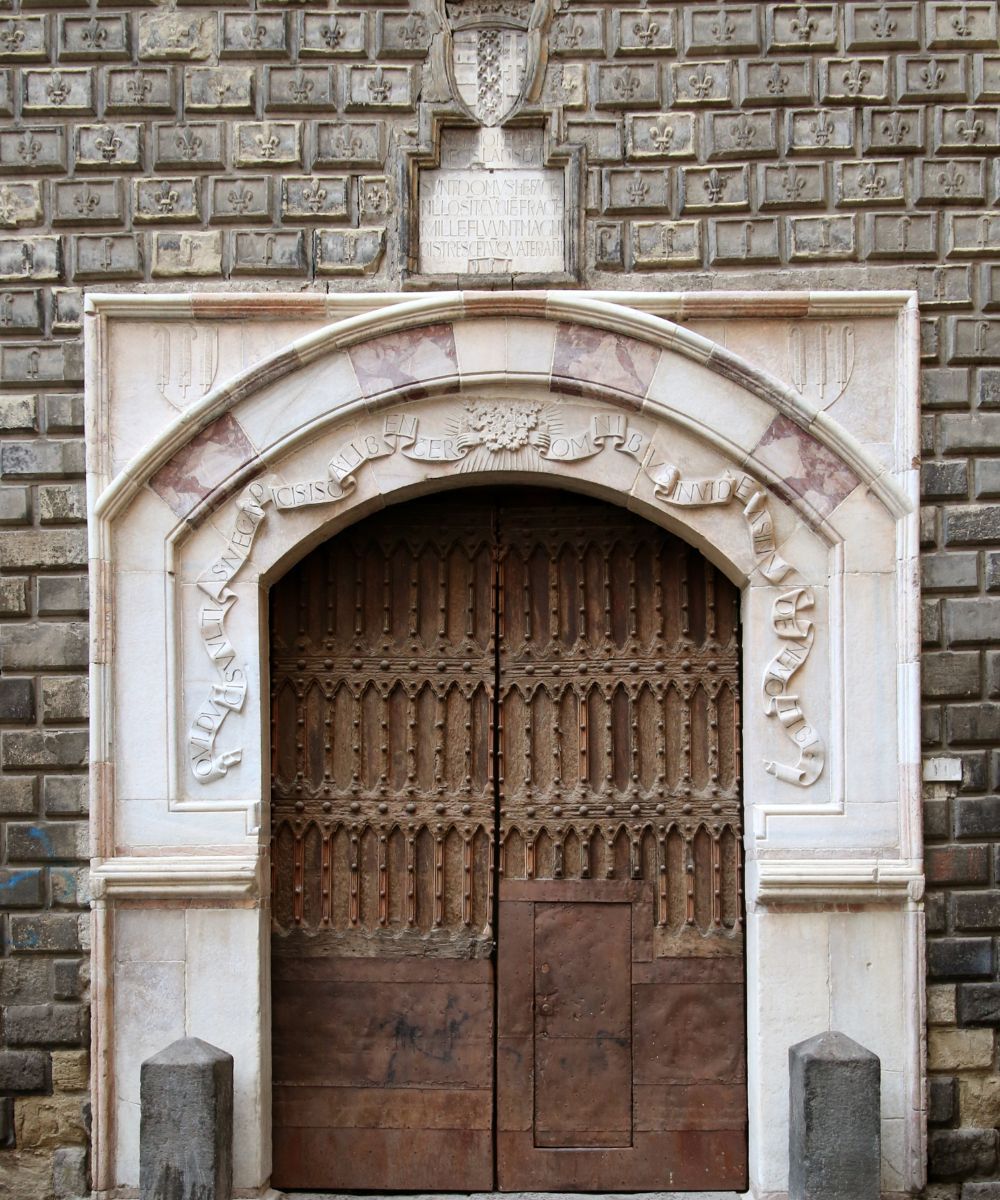
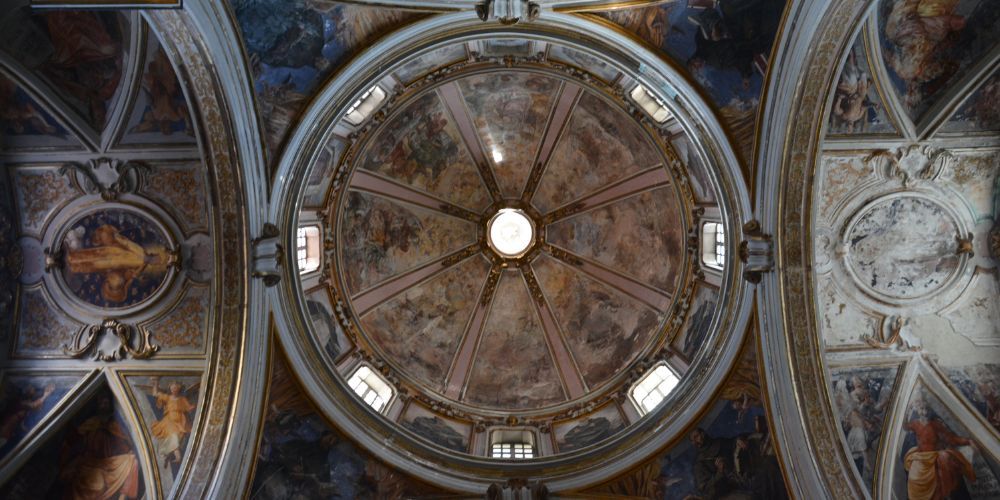


Lascia un commento